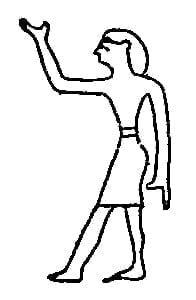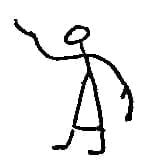The generalization of Tylor that “gesture language is substantially the same among savage tribes all over the world,” interpreted by his remarks in another connection, is understood as referring to their common use of signs, and of signs formed on the same principles, but not of precisely the same signs to express the same ideas. In this sense of the generalization the result of the writer’s study not only sustains it, but shows a surprising number of signs for the same idea which are substantially identical, not only among savage tribes, but among all peoples that use gesture signs with any freedom. Men, in groping for a mode of communication with each other, and using the same general methods, have been under many varying conditions and circumstances which have determined differently many conceptions and their semiotic execution, but there have also been many of both which were similar. Our Indians have no special superstition concerning the evil-eye like the Italians, nor have they been long familiar with the jackass so as to make him emblematical of stupidity; therefore signs for these concepts are not cisatlantic, but even in this paper many are shown which are substantially in common between our Indians and Italians. The large collection already obtained, but not now published, shows many others identical, not only with those of the Italians and the classic Greeks and Romans, but of other peoples of the Old World, both savage and civilized. The generic uniformity is obvious, while the occasion of specific varieties can be readily understood.
A typical gesture for night is as follows: Place the flat hands, horizontally, about two feet apart, move them quickly in an upward curve toward one another until the right lies across the left. “Darkness covers all.” See Fig. 312, page 489.The conception of covering executed by delineating the object covered beneath the middle point of an arch or curve, appears also clearly in the Egyptian characters for night, Fig. 144 (Champollion, Dict., p. 3).The upper part of the character is taken separately to form that for sky (see page 372, infra).

The Egyptian figurative and linear characters, Figs. 145 and 146 (Champollion, Dict., p. 28), for calling upon and invocation, also used as an interjection, scarcely require the quotation of an Indian sign, being common all over the world.The gesture sign made by several tribes for many is as follows: Both hands, with spread and slightly curved fingers, are held pendent about two feet apart before the thighs; then bring them toward one another, horizontally, drawing them upward as they come together. (Absaroka I; Shoshoni and Banak I; Kaiowa I; Comanche III; Apache II; Wichita II.)


“An accumulation of objects.” This may be the same motion indicated by the Egyptian character, Fig. 147, meaning to gather together (Champollion, Dict., p. 459).

The Egyptian character, Fig. 148, which in its linear form is represented in Fig. 149, and meaning to go, to come, locomotion, is presented to show readers unfamiliar with hieroglyphics how a corporeal action may be included in a linear character without being obvious or at least certain, unless it should be made clear by comparison with the full figurative form or by other means. This linear form might be noticed many times without certainty or perhaps suspicion that it represented the human legs and feet in the act of walking. The same difficulty, of course, as also the same prospect of success by careful research, attends the tracing of other corporeal motions which more properly come under the head of gesture signs.


